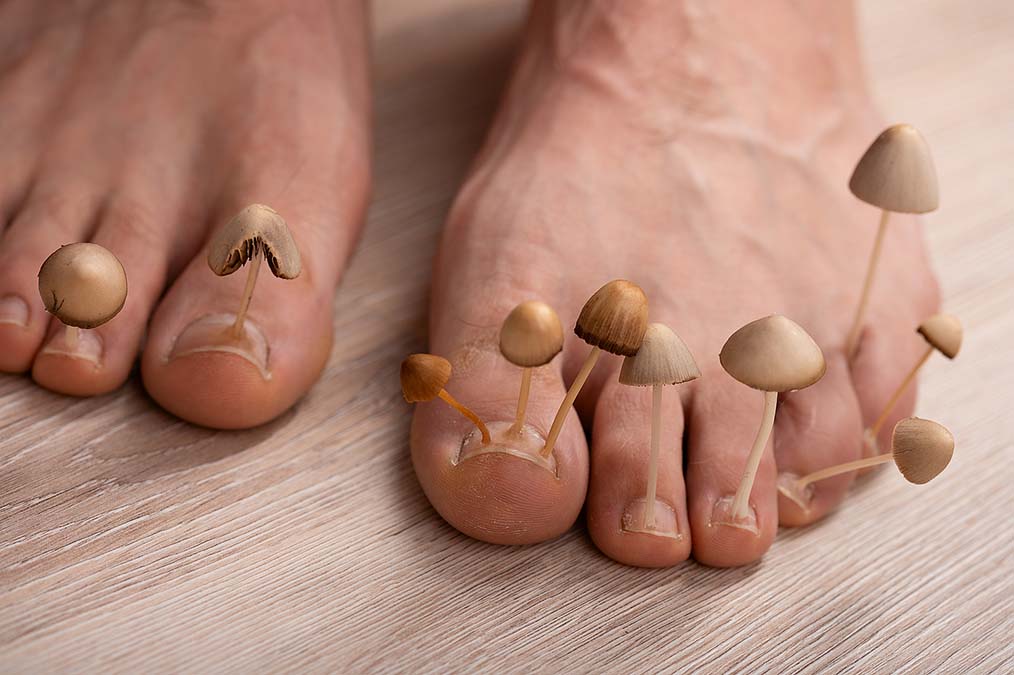 When it comes to nail fungus, there is no shortage of home remedy suggestions. Some are fiction, while others work quite well.
When it comes to nail fungus, there is no shortage of home remedy suggestions. Some are fiction, while others work quite well.
But most of these have never been tested in reliable studies—until now.
A new study published in the journal Scientific Reports put some untraditional nail fungus remedies to the test and found a few that worked well.
The researchers began their study by stating that vulnerable populations with compromised immune systems were more likely than the rest of the population to suffer from nail fungus.
Accordingly, they found two such vulnerable populations and tested their nails to see how many different fungal species existed there. Additionally, they gave their subjects a questionnaire to examine their quality of life, their attitudes regarding their condition, and their personalities.
The first vulnerable group consisted of hospital patients who had visited a hospital with a condition other than nail fungus, but who were referred to the study because of signs of nail fungus.
The second group consisted of homeless people who had visited a center that provided them with free food and other support.
In the hospital group, approximately 45% of all nails were affected, compared with 66% in the homeless group. Interestingly, the hospital group had a wider variety of different fungi than the homeless group did.
Among the hospital patients, 37.8% reported experiencing shame and embarrassment due to their nail fungus, as did 54% of the homeless subjects.
Most of the participants—66% of the hospital patients and 68% of the homeless subjects—reported being worried about the condition of their feet.
The researchers then took the fungi they discovered in their subjects’ nails into the laboratory, where they applied some common antiseptics to them to see which would kill them.
The first success was with an antiseptic called povidone-iodine, which some readers may know as Betadine. It appears in everything from mouthwashes to ointments for treating burns, blisters, or cuts. It is also used by doctors to wash their hands or by nurses to disinfect the skin of patients before and after surgery.
The agent in povidone-iodine that is active against bacteria (and probably against nail fungi too) is iodine, which is obviously a natural substance. But when scientists make povidone-iodine, they change and weaken it so that it no longer irritates skin.
The antiseptic octenidine dihydrochloride also worked against most of the fungi, but this can definitely not be called natural.
Long ago, it was derived from the oily substance that results from the boiling of animal bones. That was probably natural, but too disgusting to contemplate. Today it is made of coal tar or is synthetically produced from other chemicals.
This does not mean that you have to use one of these two substances, but it does mean that antiseptics that work against bacteria also work against nail fungus.

 Overcoming IBD
Overcoming IBD Multiple Sclerosis
Multiple Sclerosis Banishing Bronchitis
Banishing Bronchitis Gum Disease Gone
Gum Disease Gone Overcoming Onychomycosis
Overcoming Onychomycosis Neuropathy No More
Neuropathy No More The Prostate Protocol
The Prostate Protocol Brain Booster
Brain Booster
 Ironbound
Ironbound
 Solution for Shingles
Solution for Shingles
 The Bone Density Solution
The Bone Density Solution
 The Ultimate Healing Protocol
The Ultimate Healing Protocol
 The Parkinson's Protocol
The Parkinson's Protocol
 The Chronic Kidney Disease Solution
The Chronic Kidney Disease Solution
 Overthrowing Anxiety
Overthrowing Anxiety The Fatty Liver Solution
The Fatty Liver Solution The Hypothyroidism Solution
The Hypothyroidism Solution
 The End of Gout
The End of Gout The Blood Pressure Program
The Blood Pressure Program
 The Oxigized Cholesterol Strategy
The Oxigized Cholesterol Strategy
 Stop Snoring And Sleep Apnea Program
Stop Snoring And Sleep Apnea Program
 The Arthritis Strategy
The Arthritis Strategy The Vertigo & Dizziness Program
The Vertigo & Dizziness Program The 3-Step Diabetes Strategy
The 3-Step Diabetes Strategy Hemorrhoids Healing Protocol
Hemorrhoids Healing Protocol The Erectile Dysfunction Master
The Erectile Dysfunction Master Weight Loss Breeze
Weight Loss Breeze The IBS Program
The IBS Program The Insomnia Program
The Insomnia Program The Migraine and Headache Program
The Migraine and Headache Program The Neck Pain Solution
The Neck Pain Solution The Menopause Solution
The Menopause Solution The Ejaculation Master
The Ejaculation Master The TMJ Solution
The TMJ Solution The Acid Reflux Solution
The Acid Reflux Solution The Fibromyalgia Solution
The Fibromyalgia Solution The Psoriasis Strategy
The Psoriasis Strategy